Hall effect and sensors based on it
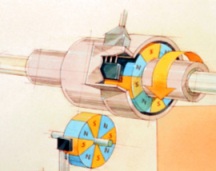 The Hall effect was discovered in 1879 by the American scientist Edwin Herbert Hall. Its essence is as follows. If a current is passed through a conductive plate and a magnetic field is directed perpendicular to the plate, then the voltage appears in the direction transverse to the current (and the direction of the magnetic field): Uh = (RhHlsinw) / d, where Rh is the Hall coefficient, which depends on the material of the conductor; H is the magnetic field strength; I is the current in the conductor; w is the angle between the direction of the current and the magnetic field induction vector (if w = 90 °, sinw = 1); d is the thickness of the material.
The Hall effect was discovered in 1879 by the American scientist Edwin Herbert Hall. Its essence is as follows. If a current is passed through a conductive plate and a magnetic field is directed perpendicular to the plate, then the voltage appears in the direction transverse to the current (and the direction of the magnetic field): Uh = (RhHlsinw) / d, where Rh is the Hall coefficient, which depends on the material of the conductor; H is the magnetic field strength; I is the current in the conductor; w is the angle between the direction of the current and the magnetic field induction vector (if w = 90 °, sinw = 1); d is the thickness of the material.
The Hall sensor has a slotted design. A semiconductor is located on one side of the slot, through which current flows when the ignition is turned on, and on the other hand, a permanent magnet.
In a magnetic field, moving electrons are affected by a force. The force vector is perpendicular to the direction of both the magnetic and electric components of the field.
If a semiconductor wafer (for example, from indium arsenide or indium antimonide) is introduced into a magnetic field through induction into an electric current, then a potential difference arises on the sides, perpendicular to the direction of the current. Hall voltage (Hall EMF) is proportional to current and magnetic induction.
There is a gap between the plate and the magnet. In the gap of the sensor is a steel screen. When there is no screen in the gap, a magnetic field acts on the semiconductor plate and the potential difference is removed from it. If there is a screen in the gap, then the magnetic lines of force close through the screen and do not act on the plate, in this case, the potential difference does not occur on the plate.
The integrated circuit converts the potential difference created on the plate into negative voltage pulses of a certain value at the output of the sensor. When the screen is in the sensor gap, there will be voltage at its output, if there is no screen in the sensor gap, then the voltage at the sensor output is close to zero ...
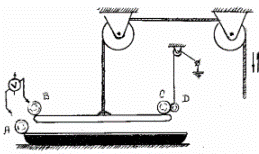 In the summer of 1814 Napoleon’s winner All-Russian Emperor Alexander the First visited the Dutch city of Haarlem. The distinguished guest was invited to the local academy. Here, as the historiographer wrote, "The large electric machine first of all attracted the attention of His Majesty." Made in 1784. the car really made a big impression. Two glass disks with a diameter of a person’s height rotated on a common axis by the effort of four people. Friction electricity (triboelectricity) was supplied to charge the battery of two-Leiden cans, capacitors of that time. Sparks from them reached a length of more than half a meter, which the emperor was convinced of.
In the summer of 1814 Napoleon’s winner All-Russian Emperor Alexander the First visited the Dutch city of Haarlem. The distinguished guest was invited to the local academy. Here, as the historiographer wrote, "The large electric machine first of all attracted the attention of His Majesty." Made in 1784. the car really made a big impression. Two glass disks with a diameter of a person’s height rotated on a common axis by the effort of four people. Friction electricity (triboelectricity) was supplied to charge the battery of two-Leiden cans, capacitors of that time. Sparks from them reached a length of more than half a meter, which the emperor was convinced of.
His reaction to this Central European miracle of technology was more than restrained. From childhood, Alexander was familiar with an even larger machine, and it gave more of these sparks. It was made. even earlier in 1777. in his homeland in St. Petersburg, it was simpler, safer and required less servants than the Dutch. Empress Catherine II in the presence of her grandchildren entertained herself with the help of this machine by electrical experiments in Tsarskoye Selo. Then she, as a rare exhibit, was transferred to the St. Petersburg Kunstkamera, then, by some order, she was taken out of there and her traces were lost.
Alexander was shown the technique of the day before yesterday. The principle of generating electricity using friction has not been applied for more than 200 years, while the idea underlying the domestic machine is still used in modern laboratories of schools and universities in the world. This principle - electrostatic induction - was discovered and first described in Russia by the Russian academician, whose name few people know, and this is unfair. I want to remind about this to the current generation ...
In the near future, all power cables will be made of superconducting materials
 The flow of current in conductors is always associated with energy losses, i.e. with the transition of energy from electrical to thermal. This transition is irreversible, the reverse transition is associated only with the completion of work, as thermodynamics speaks of this. There is, however, the possibility of converting thermal energy into electrical energy and using so-called thermoelectric effect, when two contacts of two conductors are used, one of which is heated and the other is cooled.
The flow of current in conductors is always associated with energy losses, i.e. with the transition of energy from electrical to thermal. This transition is irreversible, the reverse transition is associated only with the completion of work, as thermodynamics speaks of this. There is, however, the possibility of converting thermal energy into electrical energy and using so-called thermoelectric effect, when two contacts of two conductors are used, one of which is heated and the other is cooled.
In fact, and this fact is surprising, there are a number of conductors in which, under certain conditions, there is no energy loss during the flow of current! In classical physics, this effect is inexplicable.
According to the classical electronic theory, the motion of a charge carrier occurs in an electric field uniformly accelerated until it collides with a structural defect or with a lattice vibration. After a collision, if it is inelastic, like a collision of two plasticine balls, an electron loses energy, transferring it to a lattice of metal atoms. In this case, in principle, there can be no superconductivity.
It turns out that superconductivity appears only when quantum effects are taken into account. It’s hard to imagine it. A slight idea of the mechanism of superconductivity can be obtained from the following considerations ...
How plants respond to electricity
 To begin with, the agricultural industry is completely destroyed. What's next? Is it time to collect stones? Is it time to unite all the creative forces to give the villagers and summer residents those new products that will dramatically increase productivity, reduce manual labor, find new ways in genetics ... I would suggest readers of the magazine to be authors of the heading "For the village and summer residents". I will start with the long-standing work "Electric field and productivity."
To begin with, the agricultural industry is completely destroyed. What's next? Is it time to collect stones? Is it time to unite all the creative forces to give the villagers and summer residents those new products that will dramatically increase productivity, reduce manual labor, find new ways in genetics ... I would suggest readers of the magazine to be authors of the heading "For the village and summer residents". I will start with the long-standing work "Electric field and productivity."
In 1954, when I was a student of the Military Academy of Communications in Leningrad, I was passionately carried away by the process of photosynthesis and conducted an interesting test with growing onions on the windowsill. The windows of the room in which I lived were facing north, and therefore the bulbs could not receive the sun. I planted five bulbs in two elongated boxes. He took the earth in the same place for both boxes. I had no fertilizers, i.e. the same conditions for growing were created. Above one box on top, at a distance of half a meter (Fig. 1), I placed a metal plate to which I attached a wire from a high-voltage rectifier + 10 000 V, and a nail was inserted into the ground of this box, to which I connected a “-” wire from the rectifier.
I did this so that, according to my theory of catalysis, the creation of high potential in the plant zone will lead to an increase in the dipole moment of the molecules involved in the photosynthesis reaction, and the test days are pulled. Within two weeks I discovered ...
How not to spoil your health in the pursuit of energy savings
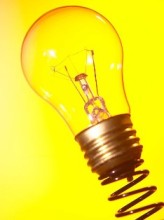 In the literature, there is always a theme of saving electricity and extending the life of incandescent lamps. In most articles, a very simple method is proposed - switching a semiconductor diode in series with the lamp.
In the literature, there is always a theme of saving electricity and extending the life of incandescent lamps. In most articles, a very simple method is proposed - switching a semiconductor diode in series with the lamp.
This topic has repeatedly appeared in the magazines "Radio", "Radio amateur", she did not bypass "Radioamator" "[1-4]. They offer a wide variety of solutions: from the simple inclusion of a diode in series with a cartridge [2], the difficult manufacture of a “tablet” [1] and the “prescribing an aspirin bulb” [3] to the manufacture of an “adapter cap” [4]. Moreover, on the pages " "Radioamator" "flares up a quiet debate about whose" pill "is better and how to" swallow "it.
The authors took good care of the "health" and "durability" of the incandescent lamp and completely forgot about their health and the health of their family. "What's the matter?" - you ask. Just in those same blinks that suggest masking with the help of a “milky” lampshade [3].Perhaps there will be an illusion of a decrease in blinks, but this will not make them smaller, and their negative impact will not decrease.
So, we can choose which is more important: the health of the light bulb or ours? Is natural light better than artificial? Of course! Why? There can be many answers. And one of them - artificial lighting, for example, incandescent lamps, blinks at a frequency of 100 Hz. Pay attention not to 50 Hz, as it is sometimes mistakenly believed, referring to the frequency of the electrical network. Due to the inertia of our vision, we do not notice flashes, but this does not mean at all that we do not perceive them. They affect the organs of vision and, of course, the human nervous system. We get tired faster ...
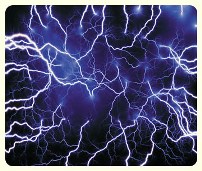
Despite the indisputable successes of the modern theory of electromagnetism, the creation on its basis of such areas as electrical engineering, radio engineering, electronics, there is no reason to consider this theory complete.
The main drawback of the existing theory of electromagnetism is the lack of model concepts, a lack of understanding of the essence of electrical processes; hence the practical impossibility of further development and improvement of the theory. And from the limitations of the theory, many applied difficulties also follow.
There are no grounds for believing the theory of electromagnetism to be the height of perfection. In fact, the theory has accumulated a number of omissions and direct paradoxes for which very unsatisfactory explanations have been invented, or there are no such explanations at all.
For example, how to explain that two mutually motionless identical charges, which are supposed to be repelled from each other according to the Coulomb law, are actually attracted if they move together a relatively long-abandoned source? But they are attracted, because now they are currents, and identical currents are attracted, and this has been experimentally proved.
Why is the electromagnetic field energy per unit length of the conductor with the current generating this magnetic field tending to infinity if the return conductor is moved away? Not the energy of the entire conductor, but precisely per unit length, say, one meter? ...
To the history of electric lighting
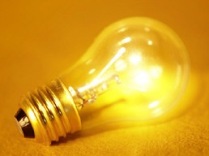 This story begins with a topic very far from electricity, which confirms the fact that in science there are no secondary or unpromising for study. In 1644 Italian physicist E. Toricelli invented the barometer. The device was a glass tube about a meter long with a sealed end. The other end was dipped in a cup of mercury. In the tube, the mercury did not sink completely, but the so-called “Toricellian emptiness” formed, the volume of which varied due to weather conditions.
This story begins with a topic very far from electricity, which confirms the fact that in science there are no secondary or unpromising for study. In 1644 Italian physicist E. Toricelli invented the barometer. The device was a glass tube about a meter long with a sealed end. The other end was dipped in a cup of mercury. In the tube, the mercury did not sink completely, but the so-called “Toricellian emptiness” formed, the volume of which varied due to weather conditions.
In February 1645 Cardinal Giovanni de Medici ordered that several such pipes be installed in Rome and kept under surveillance. This is surprising for two reasons. Toricelli was a student of G. Galileo, who in recent years has been disgraced for atheism. Secondly, a valuable idea followed from the Catholic hierarch and since then barometric observations began ...
The history of a paradox of electrical engineering
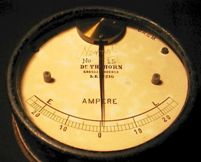 If you compose an electric circuit from a current source, an energy consumer and the wires connecting them, close it, then an electric current will flow along this circuit. It is reasonable to ask: “And in what direction?” The textbook on the theoretical foundations of electrical engineering gives the answer: “In the external circuit, the current flows from the plus of the energy source to the minus, and in the inside of the source from the minus to the plus”.
If you compose an electric circuit from a current source, an energy consumer and the wires connecting them, close it, then an electric current will flow along this circuit. It is reasonable to ask: “And in what direction?” The textbook on the theoretical foundations of electrical engineering gives the answer: “In the external circuit, the current flows from the plus of the energy source to the minus, and in the inside of the source from the minus to the plus”.
Is it so? Recall that an electric current is the ordered movement of electrically charged particles. Those in metal conductors are negatively charged particles - electrons. But the electrons in the external circuit move just the opposite from the minus of the source to the plus. This can be proved very simply. It is enough to put an electronic lamp - a diode in the above circuit.If the anode of the lamp is positively charged, then the current in the circuit will be, if negative, then there will be no current. Recall that opposite charges attract, and like charges repel. Therefore, the positive anode attracts negative electrons, but not vice versa. We conclude that the direction opposite to the motion of electrons is taken as the direction of electric current in the science of electrical engineering.
The choice of the direction opposite to the existing one cannot be called otherwise paradoxical, but the reasons for such a discrepancy can be explained if we trace the history of the development of electrical engineering as a science.
Among the many theories, sometimes even anecdotal, trying to explain the electrical phenomena that appeared at the dawn of the science of electricity, let us dwell on two main ...
